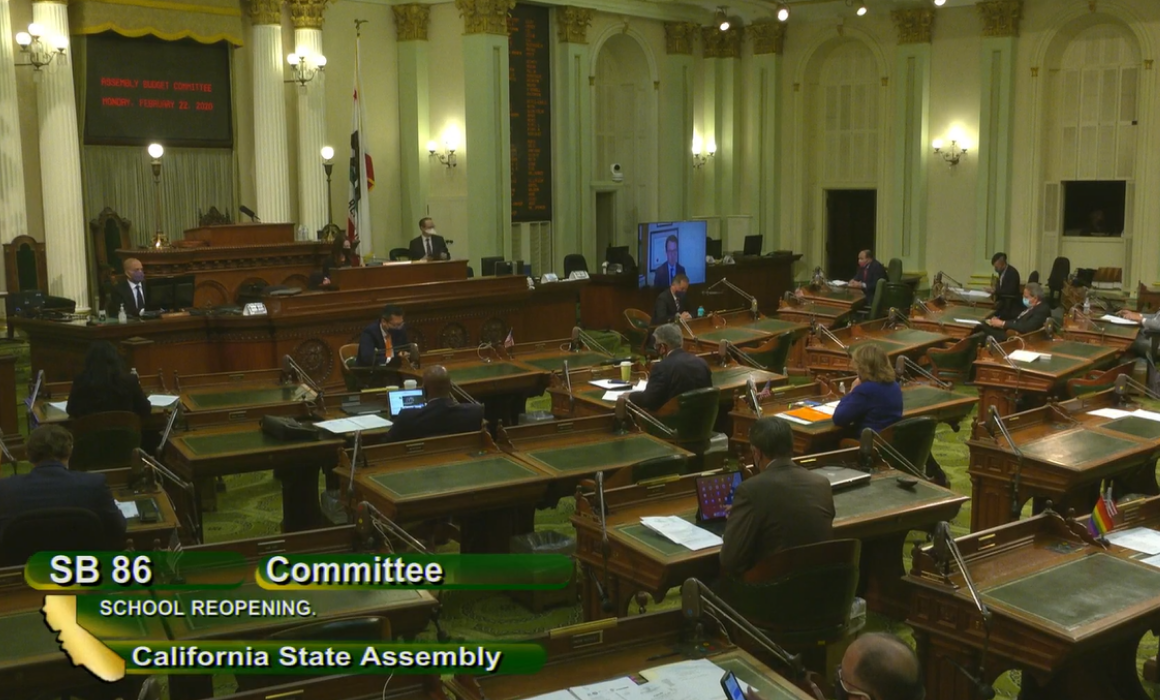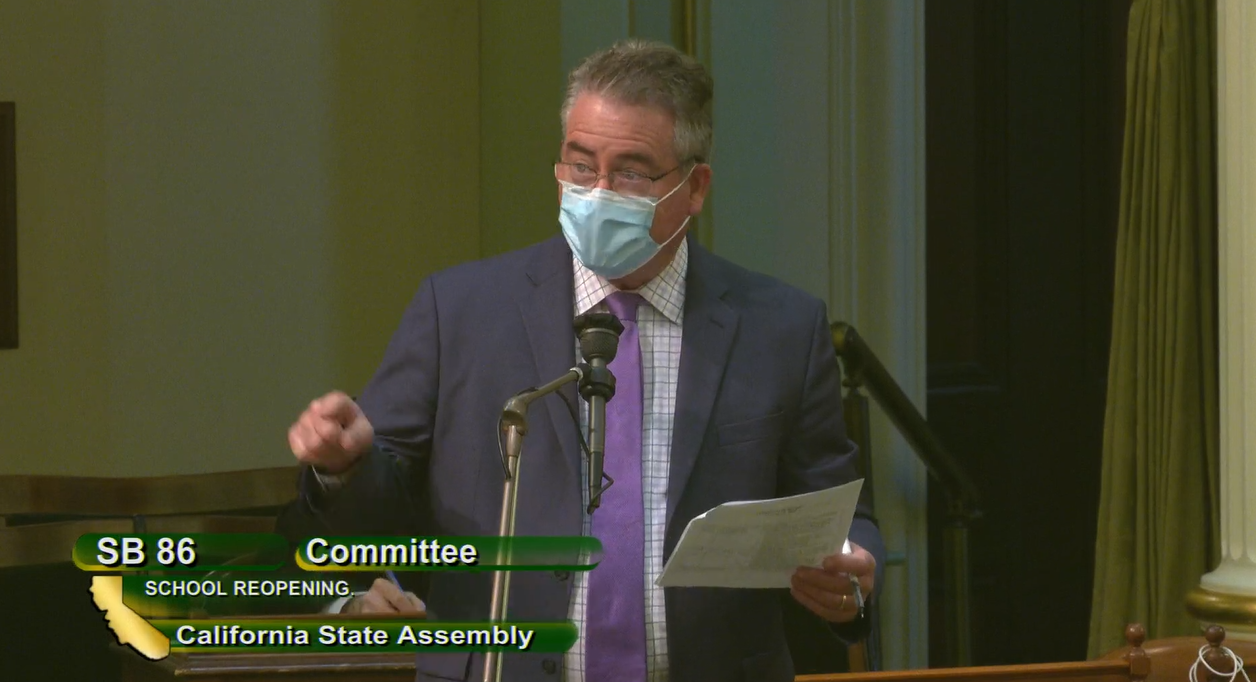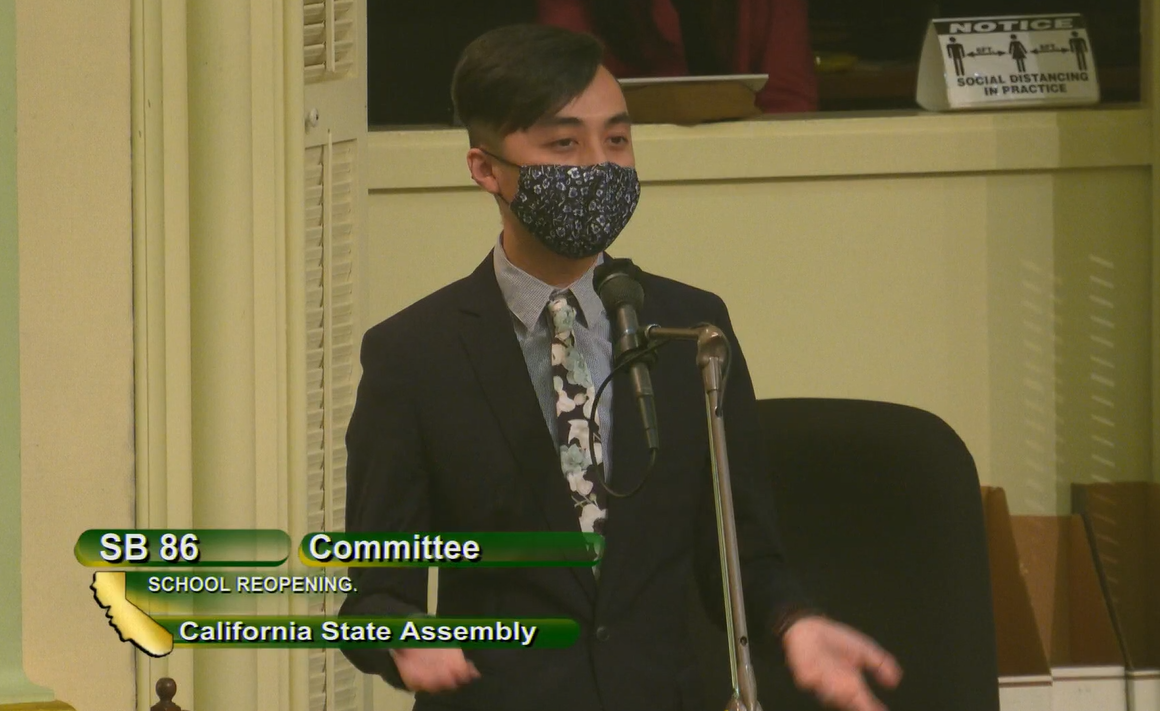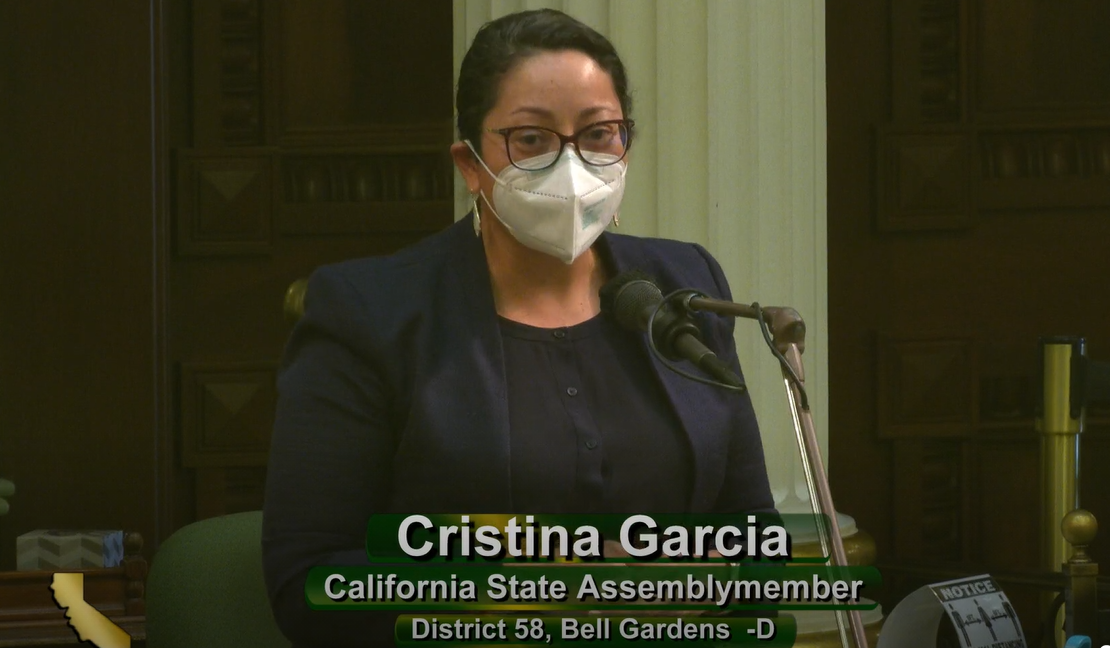
State leaders echoed CTA’s call for vaccines for educators and multi-layered mitigation strategies to safely return to in-person learning during Monday’s Assembly Budget Hearing on SB 86, the Legislature’s “School Reopening Bill.”
Developed by legislative leaders, the bill outlines a path for school districts to return to in-person instruction for TK-6 on April 15 for counties in the Red Tier and provides school districts with $6.6 billion for reopening and learning recovery. It also requires county public health departments to make COVID-19 vaccines available to educators at school sites where students are already attending in person.

Assembly Member Patrick O’Donnell
“It’s very clear we need to vaccinate our teachers—that’s how we get back,” said Assembly Member Patrick O’Donnell (D-Long Beach). “We vaccinate to educate.”
Assembly members expressed concerns about returning to schools amid an uncontrolled pandemic, underscoring CTA’s repeated calls for testing, low community transmission rates and vaccines as necessary to safely return, along with the multi-layered safety measures required by the Centers for Disease Control and California Department of Public Health. SB 86 also calls for transparency and accountability by posting safety plans on school district websites and the statewide reporting of COVID-related data.
“We appreciate the legislative proposal in prioritizing safety in opening schools for in-person instruction,” CTA President E. Toby Boyd said. “Vaccinating teachers and education support professionals, coupled with the multi-layered safety protocols, including testing, Personal Protective Equipment, six-feet social distancing, sanitization, proper ventilation, testing and contact tracing are all key to protecting students and their families as well as educators and school staff.”
SB 86 addresses many equity issues that caused the state’s largest school districts and several elected leaders to openly balk at Gov. Gavin Newsom’s Safe School for All plan, released late last year. When legislative leaders unveiled the bill last week, the governor commented that the plan doesn’t go “far enough or fast enough.” During the near-three-hour hearing, Assembly members disagreed.

Assembly Member Alex Lee
“We should not be motivated by an arbitrary calendar date,” said Assembly Member Alex Lee (D-San Jose). “It’s important we make it a safe environment for our students, families and educators.”
As a former teacher, Assembly Member Cristina Garcia (D-Bell Gardens) said she understands how hard educators are working and how much they want to return to classrooms.
“We’ve asked teachers to adjust during this pandemic and they have,” Garcia said. “We’re asking them now to return to their classrooms and they’re ready. But they also want to make sure they’re protected and not bringing something home to their families.”

The hearing came to an abrupt halt when the video feed cut mid-sentence and callers who had been holding for hours to provide comment were reportedly dumped. The hearing resumed shortly after for public comment with several educators finding their way back to the phone queue.
“No one wants to return to in-person instruction more than teachers, but we need to do it safely,” commented Roberto Rodriguez, Sweetwater Unified educator, CTA Board of Directors Member and Palomar College Trustee.
The hearing started with Assembly Budget Committee Chair Phil Ting expressing disappointment in a letter submitted by superintendents and school board members asking state leaders to maintain current procedures and guidance to “do no harm.” Ting called the letter “tone-deaf” and vowed that any reopening plan would come with significant accountability.
No vote was taken and while none is scheduled, talks continue between leaders about the best path forward. Assemblyman Reggie Jones-Sawyer said that while safety should continue to guide their decisions, state leaders need to be looking ahead to the needs students will have emerging from the pandemic—calling out the need for increased social emotional supports, more mental health professionals and trauma-informed practices in schools.
“It’s great we provide vaccinations and keep our students safe, but we need to be prepared for great needs when students return,” he said.